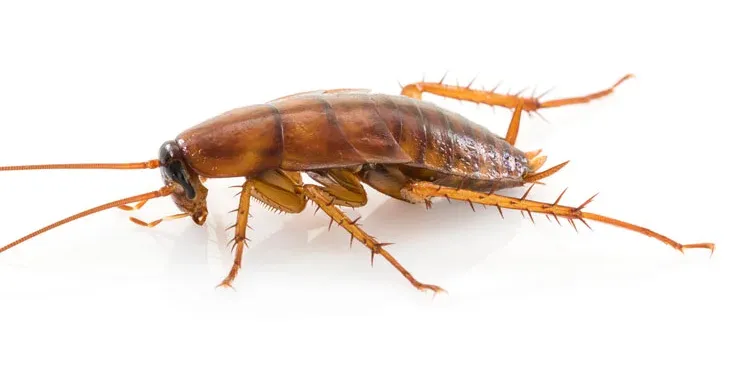Pest infestations are more than just a nuisance; they can have a significant impact on health, especially when it comes to allergies. Individuals living in areas like Weymouth may be particularly vulnerable due to the increased risk of encountering certain pests. The presence of pests such as cockroaches, rodents, dust mites, and stinging insects can worsen allergy symptoms and even trigger asthma attacks. For residents seeking to maintain a healthy environment, pest control Weymouth services can help alleviate these risks by targeting the root cause of pest-related allergies. Understanding how pests affect health is essential in preventing and managing these reactions.
Cockroach Droppings: Triggers for Asthma and Allergies
Cockroaches are common household pests that can be more than just a nuisance—they are also major contributors to asthma and allergic reactions.
- Cockroach Allergens: The droppings of cockroaches contain proteins that are potent allergens. Sneezing, itching eyes, and congestion are some of the symptoms that vulnerable people may experience when these particles enter the air and cause allergic responses.
- Asthma Flare-Ups: In individuals with asthma, exposure to cockroach droppings can cause inflammation of the airways, resulting in wheezing, coughing, and difficulty breathing. For asthma sufferers, the risk of an asthma attack increases with prolonged exposure.
- Health Risks in Children: Children, especially those living in households with frequent cockroach infestations, are at an increased risk of developing asthma. Early exposure to cockroach allergens can lead to the development of respiratory issues later in life.
Rodent Dander: Effects on Respiratory Health
Rodents, such as rats and mice, are not only a nuisance but also pose significant health risks due to their droppings and dander.
- Respiratory Irritation: Rodent dander, much like pet dander, contains proteins that can irritate the respiratory system. Inhalation of these particles can lead to sneezing, coughing, and a sore throat.
- Asthma Trigger: For those with asthma, exposure to rodent allergens can exacerbate symptoms and increase the frequency of asthma attacks. This is particularly dangerous for individuals living in poorly ventilated or infested areas.
- Potential for Long-Term Health Effects: Prolonged exposure to rodent allergens, especially in poorly controlled environments, can lead to chronic respiratory issues, including allergic rhinitis and ongoing asthma management issues.
Dust Mites: Role in Allergic Reactions
While dust mites are microscopic and often go unnoticed, their presence can have a significant impact on individuals with allergies.
- Presence in Bedding and Upholstery: Dust mites thrive in warm, humid environments such as bedding, upholstered furniture, and carpets. Their waste products and dead bodies can trigger allergic reactions when they become airborne.
- Allergic Rhinitis: Common symptoms caused by dust mite allergens include sneezing, nasal congestion, and itchy eyes. People with sensitivities to dust mites often suffer from allergic rhinitis, a condition that causes inflammation of the nasal passages.
- Exacerbation of Asthma: Dust mites are one of the most common asthma triggers. Inhalation of dust mite particles can cause airway inflammation, leading to wheezing, shortness of breath, and coughing, making asthma management more difficult.
Stinging Insects: Allergies Caused by Wasps, Bees, or Hornets
Stinging insects, such as wasps, bees, and hornets, pose a different but equally serious allergy risk.
- Allergic Reactions to Venom: The venom from stinging insects can trigger allergic reactions ranging from mild symptoms like swelling and redness to severe, life-threatening reactions known as anaphylaxis. Individuals with a known allergy to insect venom should carry an epinephrine injector.
- Symptoms of an Allergic Reaction: Common symptoms of a venom allergy include hives, difficulty breathing, dizziness, and swelling of the throat. In severe instances, anaphylaxis might develop, necessitating prompt medical intervention.
- Preventing Insect Stings: It is essential to avoid areas where these insects nest and take preventive measures to keep them away from homes. Wearing protective clothing and using insect repellents can reduce the risk of stings.
Mold from Pest Damage: Indirect Effects of Pest-Related Moisture Buildup
While pests like rodents and insects are known to cause direct allergic reactions, they can also contribute indirectly by promoting the growth of mold.
- Moisture from Rodents: Rodent urine and droppings can increase moisture levels in the home, creating an environment conducive to mold growth. Mold spores can trigger allergic reactions when inhaled, leading to symptoms like nasal congestion, coughing, and skin irritation.
- Mold Growth After Water Damage: Some pests, such as termites and carpenter ants, may cause structural damage to homes that allow moisture to seep in. This moisture can promote mold growth in hidden areas, such as behind walls and under flooring.
- Health Effects of Mold: Mold exposure can exacerbate asthma and trigger allergic rhinitis, particularly in sensitive individuals. Mold spores are known to cause respiratory issues and may also aggravate existing allergies, leading to long-term health problems if not addressed promptly.
Conclusion
Pest infestations are not just a household inconvenience—they can have a serious impact on health, especially when it comes to allergies. Cockroach droppings, rodent dander, dust mites, stinging insects, and mold caused by pest-related moisture can all contribute to respiratory issues and allergic reactions. For residents of Weymouth, maintaining regular pest control services is an essential step in safeguarding against these health risks. Professional Weymouth pest control can help eliminate the root cause of infestations and provide relief to allergy sufferers by creating a healthier living environment.






